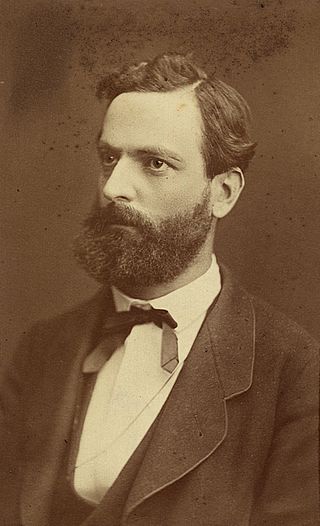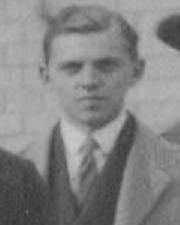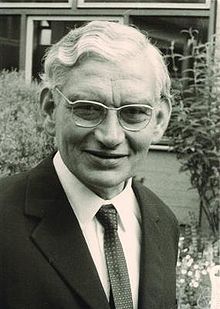
Gerhard Karl Erich Gentzen was a German mathematician and logician. He made major contributions to the foundations of mathematics, proof theory, especially on natural deduction and sequent calculus. He died of starvation in a Czech prison camp in Prague in 1945, having been interned as a German national after the Second World War.

Friedrich Ludwig Gottlob Frege was a German philosopher, logician, and mathematician. He was a mathematics professor at the University of Jena, and is understood by many to be the father of analytic philosophy, concentrating on the philosophy of language, logic, and mathematics. Though he was largely ignored during his lifetime, Giuseppe Peano (1858–1932), Bertrand Russell (1872–1970), and, to some extent, Ludwig Wittgenstein (1889–1951) introduced his work to later generations of philosophers. Frege is widely considered to be the greatest logician since Aristotle, and one of the most profound philosophers of mathematics ever.

Kurt Werner Friedrich Reidemeister was a mathematician born in Braunschweig (Brunswick), Germany.

Abraham Fraenkel was a German-born Israeli mathematician. He was an early Zionist and the first Dean of Mathematics at the Hebrew University of Jerusalem. He is known for his contributions to axiomatic set theory, especially his additions to Ernst Zermelo's axioms, which resulted in the Zermelo–Fraenkel set theory.

Ludwig Otto Blumenthal was a German mathematician and professor at RWTH Aachen University.

Wilhelm Karl Joseph Killing was a German mathematician who made important contributions to the theories of Lie algebras, Lie groups, and non-Euclidean geometry.

Felix Bernstein, was a German mathematician known for proving in 1896 the Schröder–Bernstein theorem, a central result in set theory, and less well known for demonstrating in 1924 the correct blood group inheritance pattern of multiple alleles at one locus through statistical analysis.

Heinrich Martin Weber was a German mathematician. Weber's main work was in algebra, number theory, and analysis. He is best known for his text Lehrbuch der Algebra published in 1895 and much of it is his original research in algebra and number theory. His work Theorie der algebraischen Functionen einer Veränderlichen established an algebraic foundation for Riemann surfaces, allowing a purely algebraic formulation of the Riemann–Roch theorem. Weber's research papers were numerous, most of them appearing in Crelle's Journal or Mathematische Annalen. He was the editor of Riemann's collected works.

Gerhard Hessenberg was a German mathematician who worked in projective geometry, differential geometry, and set theory.

Paul Gustav Samuel Stäckel was a German mathematician, active in the areas of differential geometry, number theory, and non-Euclidean geometry. In the area of prime number theory, he used the term twin prime for the first time.
Johannes Trolle Hjelmslev was a mathematician from Hørning, Denmark. Hjelmslev worked in geometry and history of geometry. He was the discoverer and eponym of the Hjelmslev transformation, a method for mapping an entire hyperbolic plane into a circle with a finite radius. He was the father of Louis Hjelmslev.

Friedrich Heinrich Schur was a German mathematician who studied geometry.
Ruth Kellerhals is a Swiss mathematician at the University of Fribourg, whose field of study is hyperbolic geometry, geometric group theory and polylogarithm identities.
Ernst Kötter (1859-1922) was a German mathematician.

Richard Baldus was a German mathematician, specializing in geometry.
David Rytz von Brugg was a Swiss mathematician and teacher.

Carl Friedrich Geiser was a Swiss mathematician, specializing in algebraic geometry. He is known for the Geiser involution and Geiser's minimal surface.

Friedrich Georg Schilling was a German mathematician.
The Lotschnittaxiom is an axiom in the foundations of geometry, introduced and studied by Friedrich Bachmann. It states:
Perpendiculars raised on each side of a right angle intersect.

Karl Heinrich Weise was a German mathematician. In 1956 he was the president of the German Mathematical Society.















